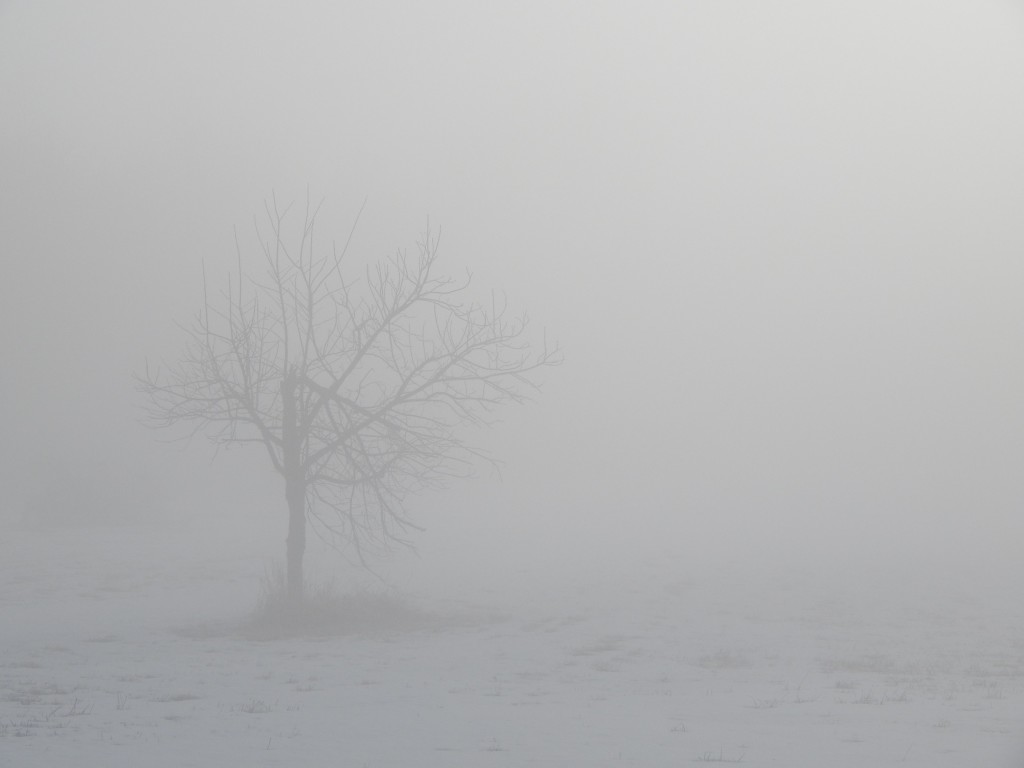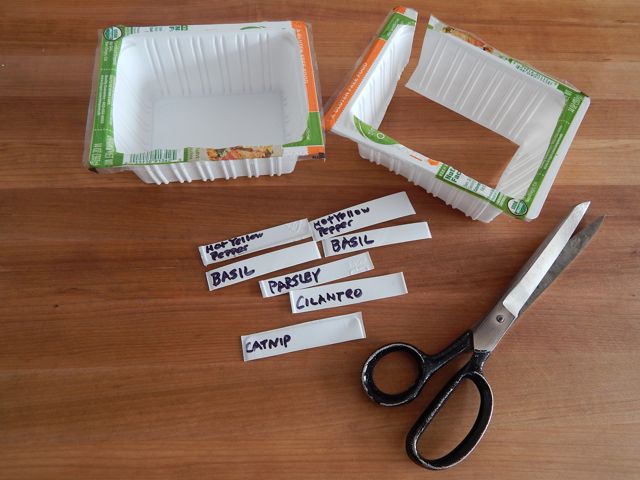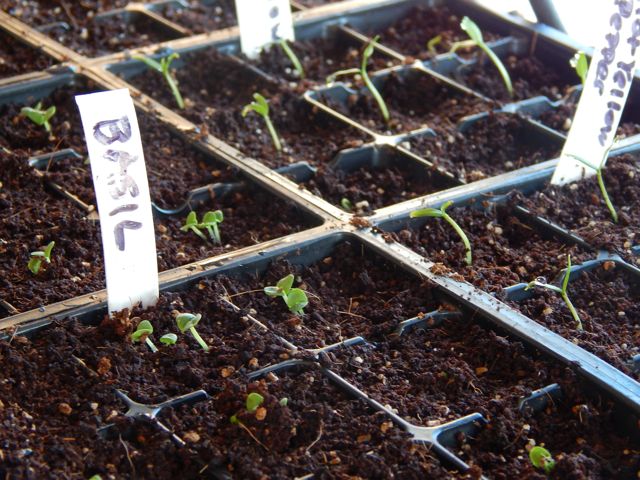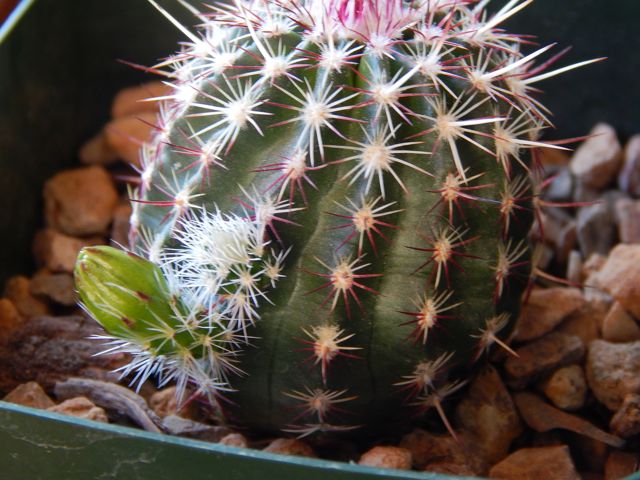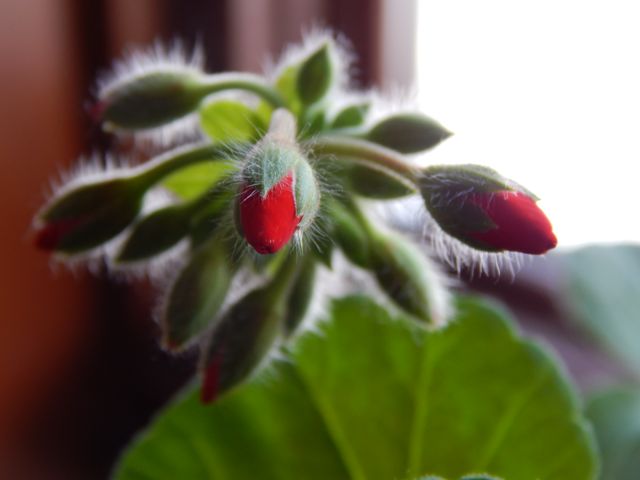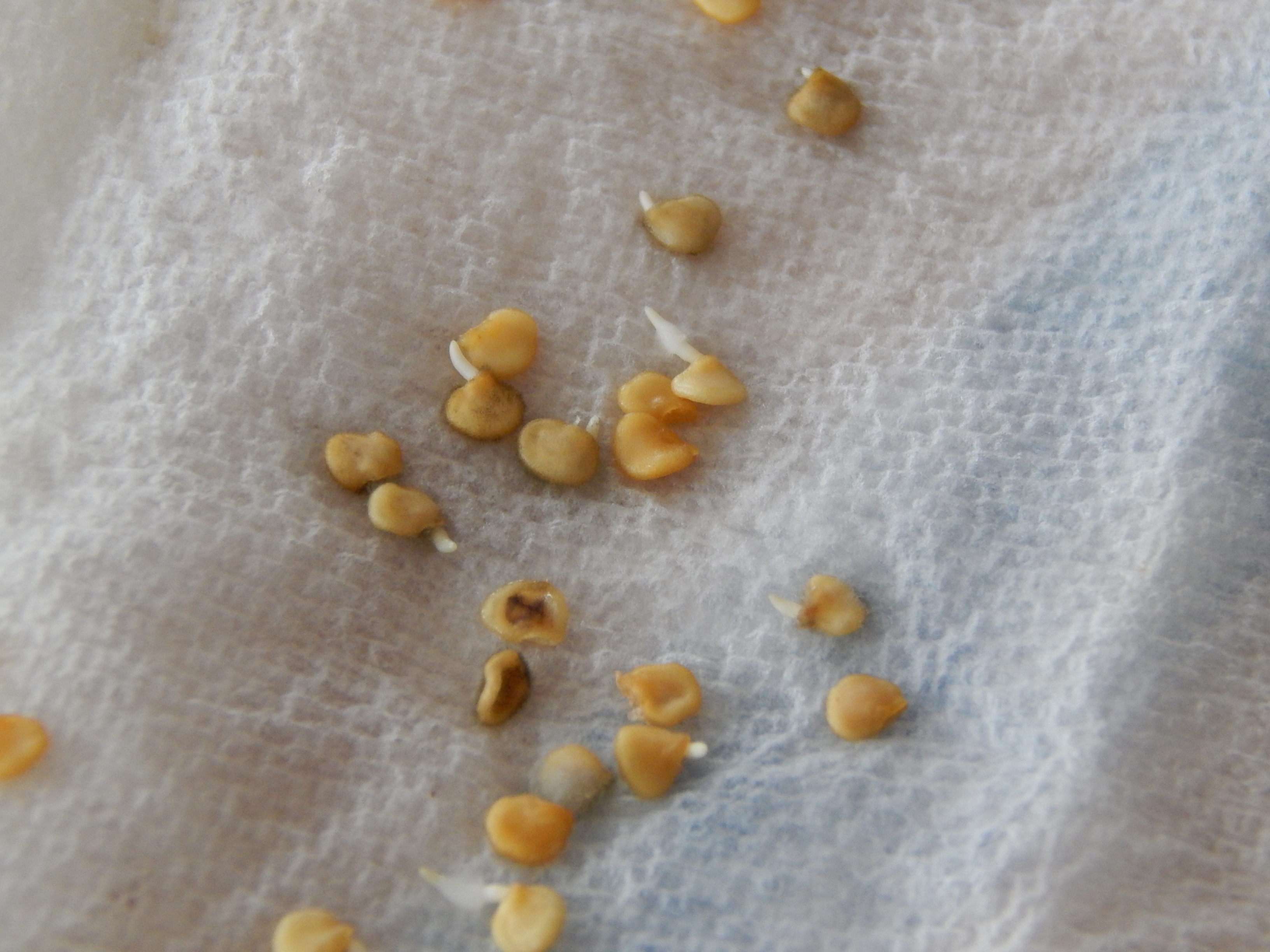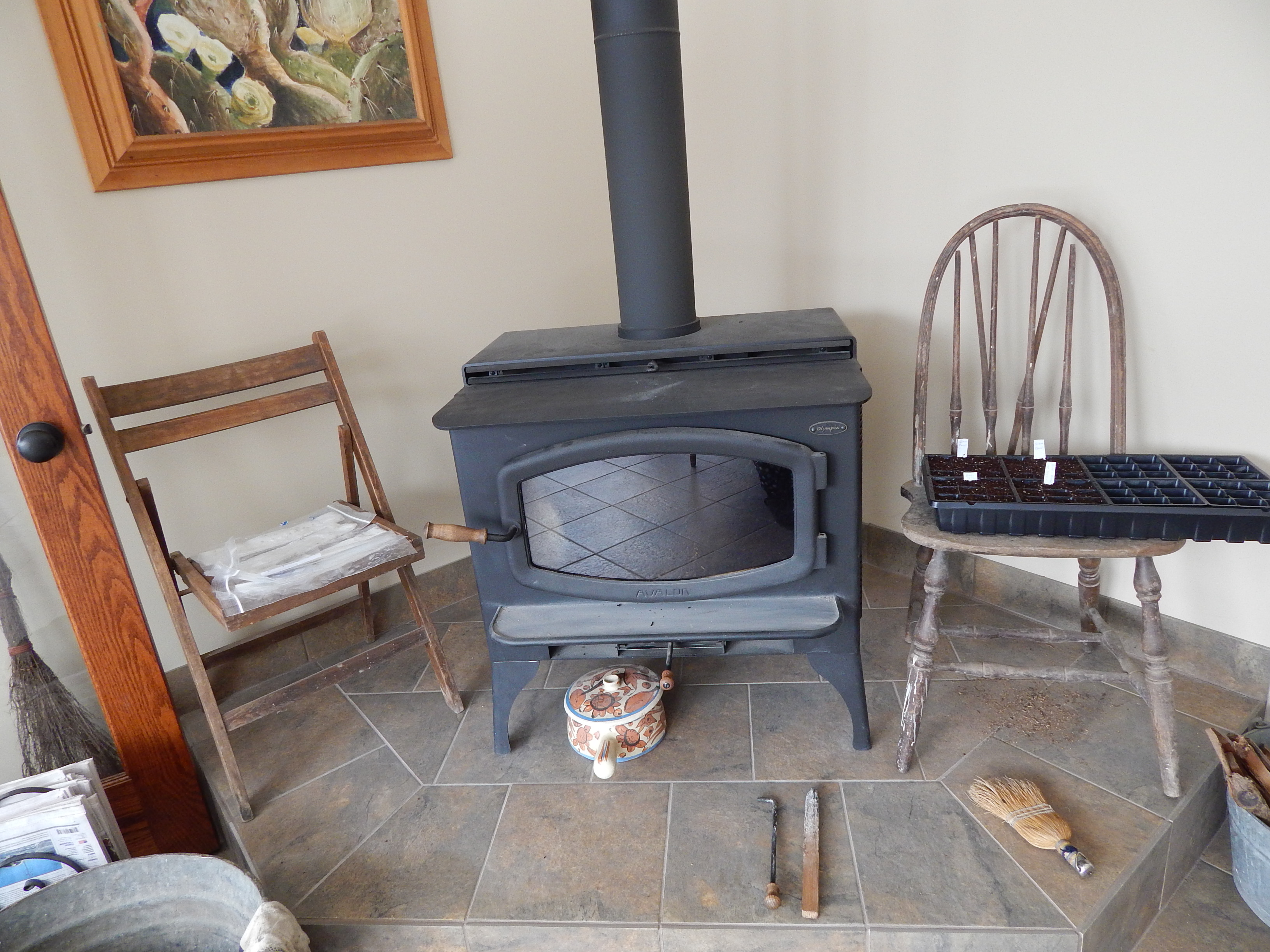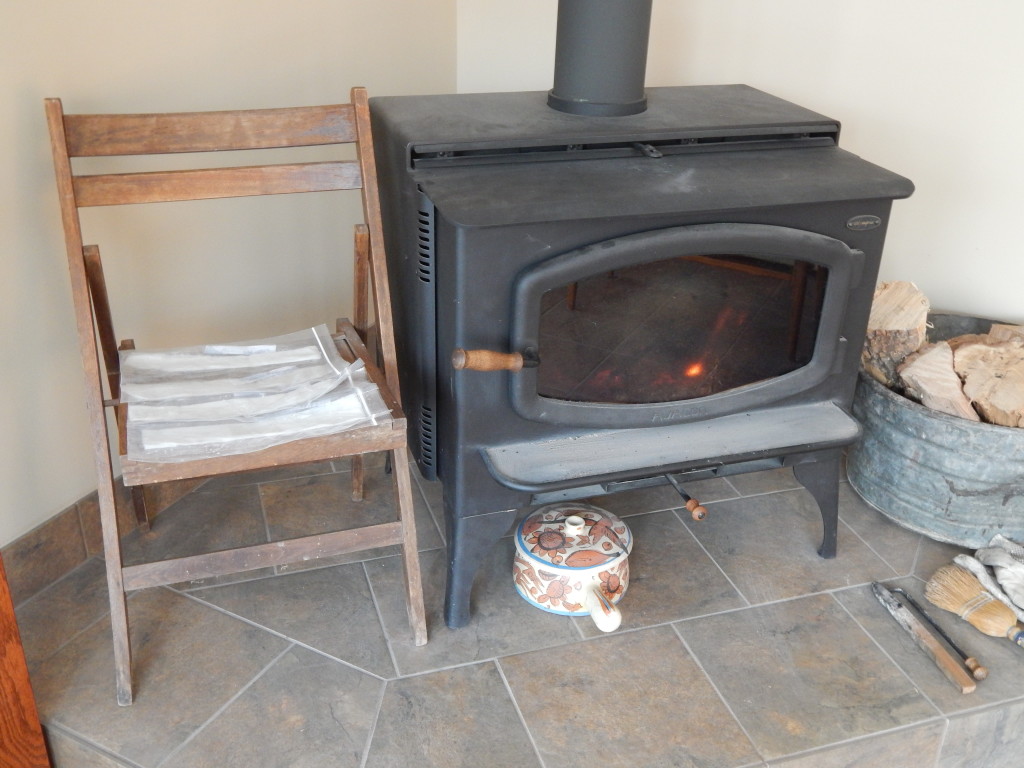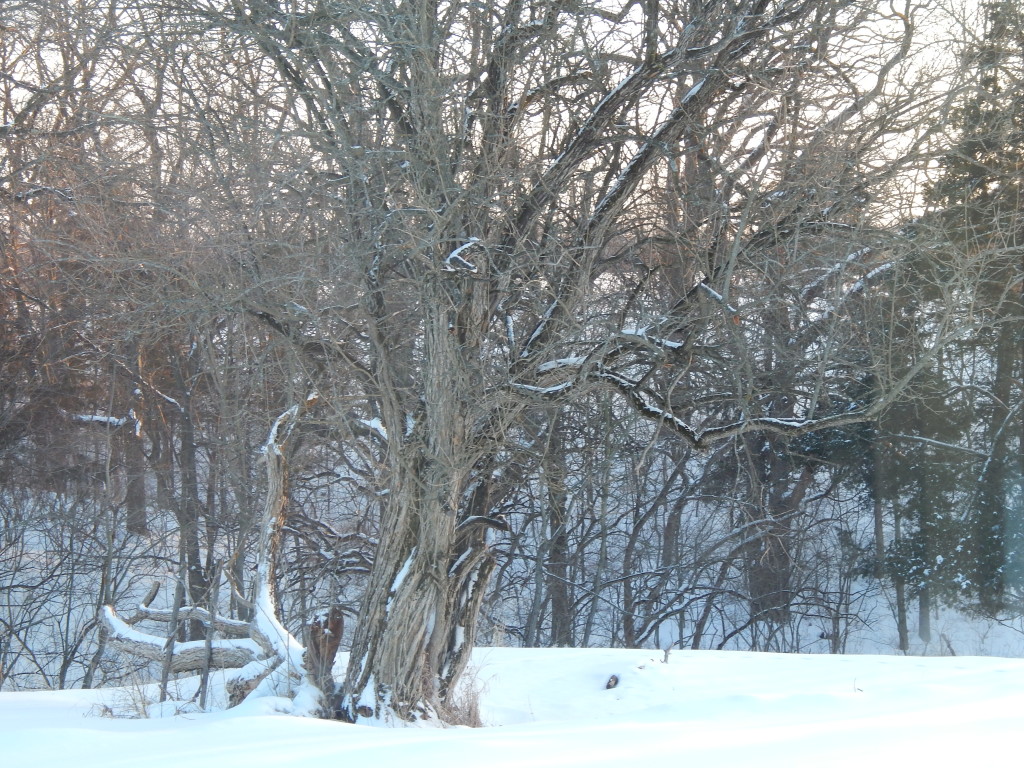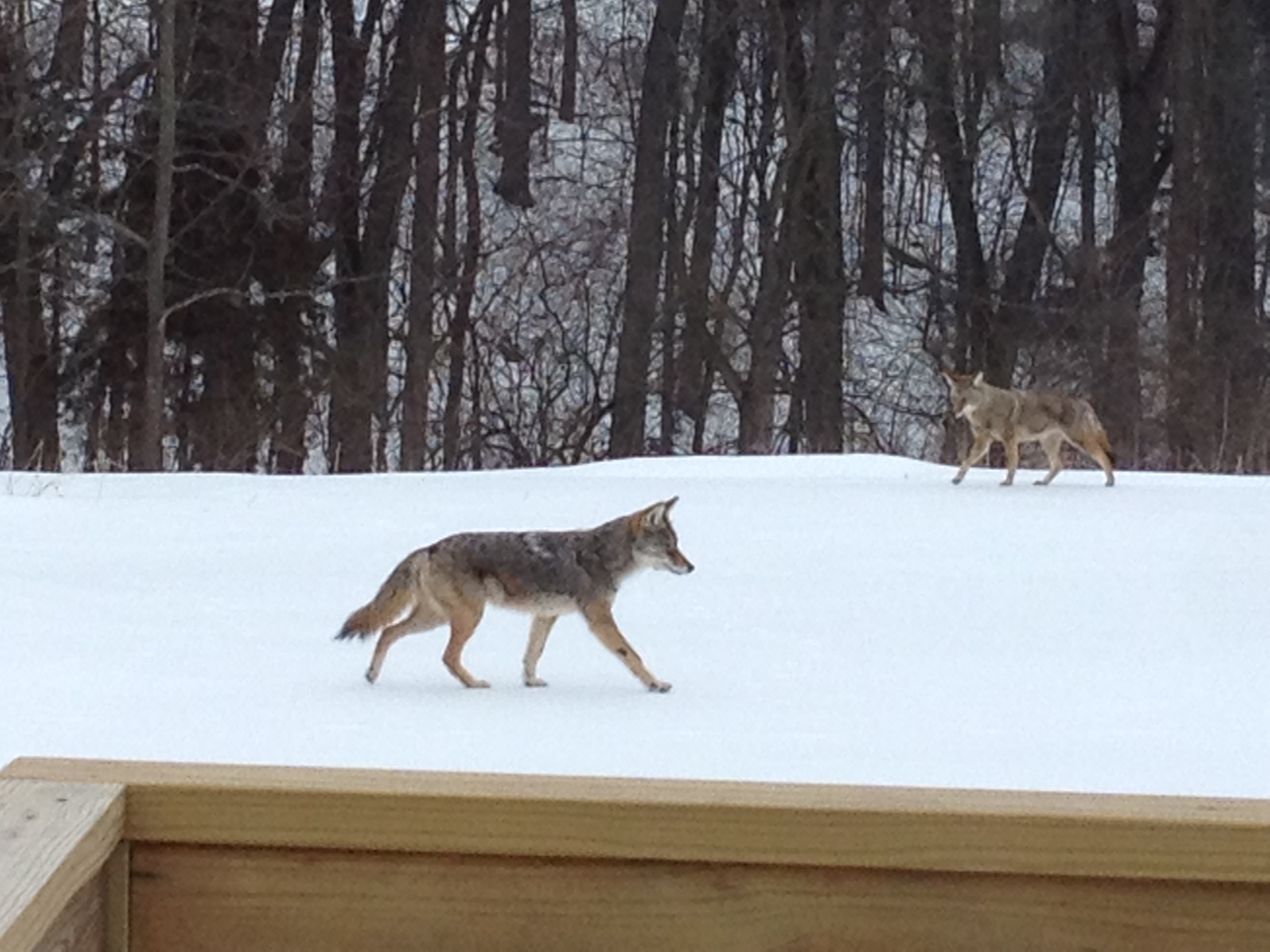Author Archives: Ruby Bee
Spring Sprouts
When the peppers started sprouting six days ago, I found myself suddenly needing plant labels for the seeds. I scoured the house and found two empty tofu containers in the recycle box. Perfect for labels!
The Breslin Yellow Hot Pepper is still the precocious leader of our spring sprouts. They’re on the right, leaning toward the sun. I rotated the box to give them some exercise. The basil is a close second with most of the seeds sprouted after just eight days. I shouldn’t have planted them so close together, but I was thinking only a few of the seeds would sprout. It’s still hard for me to believe that seeds will actually GROW. Next time I’ll make sure there’s more room between each seed, but for now I’ll just snip out the smaller seedlings and leave the biggest one in each receptacle. The parsley isn’t doing anything yet, and neither are the other herbs. So far, I’ve planted parsley, sage, cilantro, lemon balm, catnip, lots of peppers, lots of tomatoes, and since I couldn’t keep my hands out of the dirt, some flowers: purple coneflower and Black-eyed Susan.
We’re seeing other signs of spring throughout the house. When I visited our daughter, Zazil, in Tucson two years ago, I brought home this little cactus for Elliot. It hasn’t done much until now, but it seems to be flowering and, perhaps, making a new branch.
This geranium has been my constant companion for two years, ever since I moved from Chicago to be closer to the farm. It loves the southern sun and has sprung into action. We’ll have flowers in days.
Planting an Orchard
We’re trying to learn as we go without falling into our perennial problem of all research, no action, but as the Mexican proverb states, “El flojo y el mezquino dos veces andan el mismo camino,” which means the lazy person and the perfectionist both have to do things twice. We don’t want to have to plant our orchard twice.
Permaculturists recommend planting bare root trees with good care but no babying. In other words, don’t give them a wonderfully fertilized little hole that they have to leave as they grow. Good advice for parents, too!
Colorado Master Gardener program gives the most up-to-date science on planting bare root trees. The website includes clear pictures and information.
On the other hand, this info from my mom: “Our county agent and the NMSU orchardist caution that the hole for planting a tree should be straight sided, straight down. For awhile there it was all the rage to dig a bowl-shaped hole. It has been discovered that the roots follow the bowl upward and grow out of the ground rather than outward and downward. Ultimately, death on trees.” Stark recommends a 2′ X 2′ X 2′ hole for bare roots. To keep our warrantee on our trees, we’ll probably have to follow the planting instructions included. Since we ordered from Raintree and Stark, we may get two different sets of instructions.
Phil Williams offers excellent advice, with no compost or fertilizer.
Burlington Permaculture gives information about watering and pruning.
One writer (Walden Effect), quoting The Holistic Orchard, says to remove vegetation for four to six feet in diameter for each tree and mulching with wood chips. This wood keep any remaining grass down and understory plants could be placed in the mulch.
This article offers extensive information about cover crops.
The Philadelphia Orchard Project looks fascinating and has great resources for companion planting.
Deep Green Permaculture gives detailed instructions for pruning fruit trees from bare root onwards.
Starting Seeds and Planting Seedlings!!
After a little searching, I found a fabulous resource from the Old Farmer’s Almanac. It’s a planting calendar based on one’s zip code and lunar phases. I punched in our zip code and got this calendar.
Our safe(ish) last frost date is May 5, according to the Illinois Extension. Freezing can occur into mid-May, but Cinco de Mayo is easy to remember and fairly safe. They also recommend getting broccoli started early because it likes colder weather and can withstand a little frost. I’ll start some today.
So, I walk by the stove and can’t help but inspect the pepper seeds. One bag looked a little funny, like maybe mold was growing on the seeds. It’s only been 48 hours since I started them, so I didn’t expect any action on the seeds. I opened it up, and look what I found! The Breslin Yellow Hot Peppers are the champion germinators.
I planted them and popped some basil seed into the other 18 cells. Now they’re next to the stove for incubation, since we don’t have any sun today.
Starting Seeds
We’re almost ready to start our seedlings. We don’t want them to get too leggy, but we also want to get a jump on the season. Peaceful Valley has a good video about starting seedlings indoors. Peaceful Valley conducted a tomato taste test in 2014, and they provide a narrative description of how they grew the plants from seed to harvest. The last frost in Grass Valley, CA is only a week or so after ours, so the timing of their planting is similar to us here in northern Illinois.
After reading about starting seeds, I learned that peppers do best if allowed to sit between moistened paper towels in a warm place. Even with our southern sun, we have few places that stay “warm” (70 degrees) in our house. I rigged an incubation surface next to the wood stove, which should be warm most of the time.
The following picture of our osage tree was taken at about 5:15 pm. The days are getting longer, which means more sunlight for our seedlings.
Local Nurseries and Compost
Working at a library, I have access to all kinds of people, and many of them are avid gardeners. I’ve been collecting the names of nurseries, and here they are.
- Redbud Creek Farm: In Sheridan, this one looks pretty online, and they have natives and perennials.
- Hornbaker Gardens: In Princeton, they’ve got lots and lots of perennials, as well as some trees.
- Danchris Nursery: In Streator (birthplace of Clyde Tombaugh), this nursery also has shade trees. Maybe an American basswood?
- Norway Nursery: Just upriver from us, this nursery specializes in native plants. And, if you buy trees from them, you get unlimited pond water, which is supposedly the best water for newly planted trees.
Compost Supply is just northeast of here, which is lucky for us because compost can be hard to come by. This compost calculator is helpful in determining the number of cubic yards needed.
Wood chips come to us courtesy of Urban Lumberjacks (888-876-0003), who have done lots of tree pruning and cutting for us in the past.
Chickens
We’re looking forward to adopting a flock of chickens in the spring. Before they arrive, however, we have to make sure we can keep predators out. We’ve got coyotes, raccoons, foxes, skunks, opossums, and raptors of all kinds, including bald eagles.
My brother sent me the Chicken Chick’s website as a resource for making the chicken coop and run a safe place. I’ll be passing her tips on to the building committee.
Amazing Resources
If there’s something to know about gardening, my mom has probably at least heard of it. She’s been feeding me resources and books for years, and now I can save them in a better spot–HERE!
Old World Farm: These folks have plans for pergolas and other farm necessities on their Etsy website.
Herbs
We’re planning to have at least two herb spirals, as well as herbs in the landscape and sunroom. Some herbs are not so easy to find, Mexican Oregano (Lippia graveolens), for example. However, I just discovered that Dave’s Garden is not just a great source of information about plants, pollinators, orchards, and the like, but also a plant finder. I’ll be using this resource for finding uncommon varieties.
Comfrey comes recommended highly by permaculture enthusiasts, who list it as a good guild plant for fruit trees. It doesn’t grow well from seed, but may be available from Grower’s Exchange.
Colonial Creek Farm has fascinating, wonderfully aromatic herbs, including patchouli, which can be grown as a houseplant! I would love to visit their greenhouse. This is a great site for birthday shopping (wink, wink). So far, these are the plants on my wishlist:
 |
Patchouli |
 |
Chocolate Mint |
 |
Attar of Rose Scented Geranium |
 |
Lemon Grass (West Indian) |
Mountain Rose Herbs also offers fairly priced herb seeds, many of which are hard to find.
Vegetable Gardening
Mother Earth News list/map of mail order seed suppliers
The Top 15 Vegetable Seed Companies, according to Mother Earth News
- Johnny’s Selected Seeds (Winslow, Maine)
- Seed Savers Exchange (Decorah, Iowa)
- Baker Creek Heirloom Seeds (Mansfield, Mo.)
- Burpee Seeds and Plants (Warminster, Pa.)
- Territorial Seed Company (Cottage Grove, Ore.)
- Seeds of Change (Rancho Dominguez, Calif.)
- Ferry-Morse Seed Company (Fulton, Ky.)
- Southern Exposure Seed Exchange (Mineral, Va.)
- High Mowing Organic Seeds (Wolcott, Vt.)
- Fedco Seeds (Waterville, Maine)
- Nichols Garden Nursery (Albany, Ore.)
- The Cook’s Garden (Warminster, Pa.)
- Botanical Interests (Broomfield, Colo.)
- Renee’s Garden Seeds (Felton, Calif.)
- Peaceful Valley Farm & Garden Supply (Grass Valley, Calif.)

